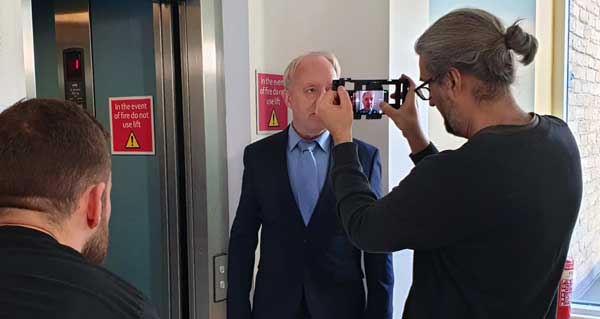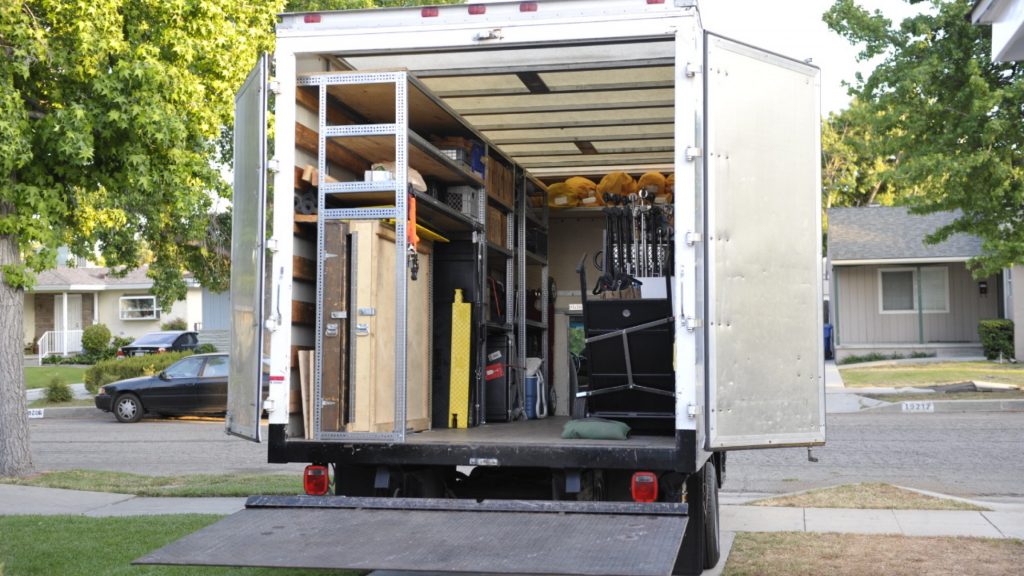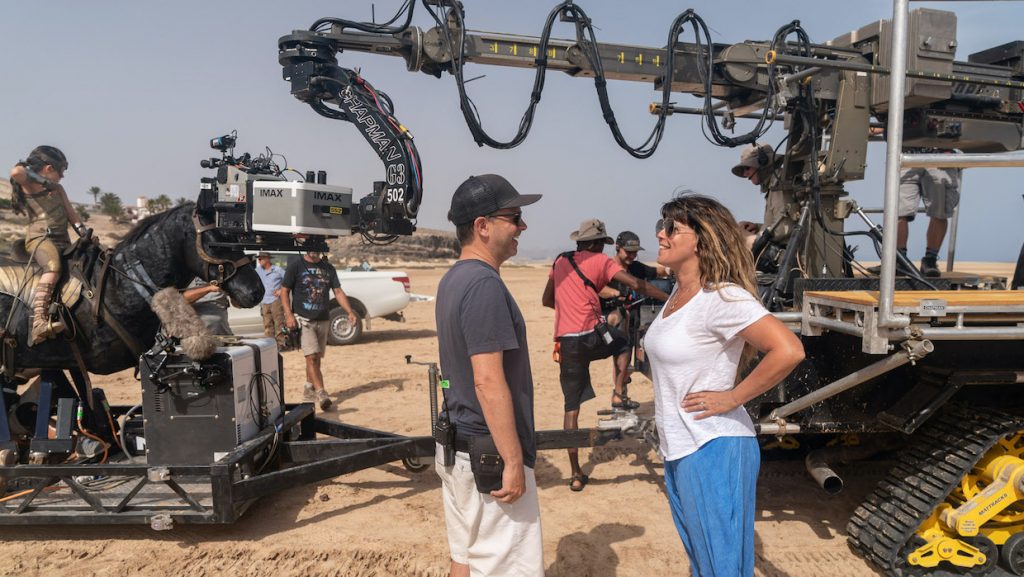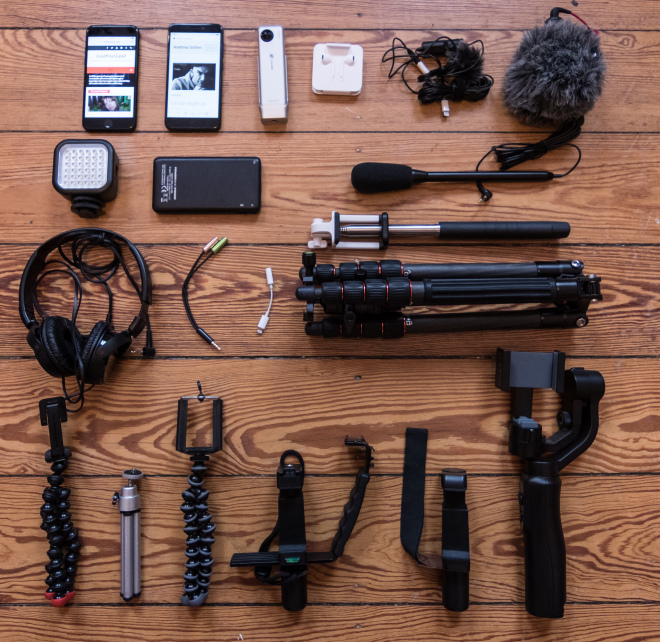Smartphone or Pro Camera: Why Equipment DOES Matter
As someone who’s never owned a DSLR or a mirrorless camera, you’d probably expect me to be one of those “equipment doesn’t matter” YouTubers. But here’s the thing: of course equipment matters. Let’s talk about why.
It’s quite often YouTubers who clearly own ridiculous amounts of equipment that are the ones insisting it doesn’t matter. Which leads us to ask the question, why did they buy it then? I mean, if you really believe kit doesn’t matter, go give your money to a homeless guy or something. Do something good for the world.
But, look, if you’ve ever been on a big budget film set, you will have seen trucks and trucks filled with equipment. And then 50 or more crew to move it around and set it up. I doubt very much producers would spend literally millions of dollars on all that stuff if it didn’t make any difference to their movie.
Well, of course it makes a difference.
They’re never going to shoot a multimillion dollar blockbuster on a smartphone. No matter how advanced smartphone cameras get, it doesn’t make sense to do that. For a start, the people paying $20 for a cinema ticket are doing so in part because they want the highest quality image and audio experience.
Of course, they also want a moving story, brought to life with great performances from the cast. But it’s not like we have to choose one or the other. Someone paying $20 wants both high quality in the technical aspects AND the creative aspects of the movie. That said, if we DID have to choose between story and performances or technical quality, I wager that 99.9% of us would choose story and performance.
The $200 Million Compromise
Let’s take an example. Say the recent blockbuster Wonder Woman 1984. Is there a reason they chose the year of George Orwell’s classic dystopian novel? I haven’t seen the movie, so I don’t know the plot.
Anyway, whereas the first Wonder Woman was shot digitally, for the follow up they decided to shoot on film. Some parts are shot using IMAX 65mm, but the majority of it is shot on 35mm film. They initially wanted to shoot the whole thing on the IMAX 65mm film camera, but it wasn’t practically possible.
Let me just say that again. They had $200 million to spend, but still had to shoot most of it at a lower image quality for practical reasons.
So you see, equipment does matter. And even people with more money to spend than I can even imagine have to compromise. Thing is, it’s not just about money. That big 65mm IMAX camera is hard to use for moving shots, even with all that money to throw around.
Balancing Multiple Factors
The lesson here is that, it’s not that equipment doesn’t matter. Rather, we have to balance many factors when choosing equipment. And image quality is just one of those factors.
Even filmmakers with $200 million to spend need to make practical decisions, choosing a smaller film size and a smaller camera because the benefits outweigh the loss in quality.
But it’s interesting to note, Wonder Woman 1984 has a lower rating on IMDb than my feature film which I shot for £4000 on a consumer camcorder. That said, while its box office was hit by the current global situation, obviously it will eventually make a lot more money than my little self-made film.
Bigger is Not Always Better
When choosing equipment for a video project, it’s not just about the highest resolution or the widest dynamic range. Like the makers of Wonder Woman 1984, we need to consider many different aspects. Not least among those factors is how much we can afford – what’s the budget?
When I had my film show at a festival in Germany, I met a filmmaker from New Zealand who had shot her first movie, on a budget of about NZ$1m. It was shot on 35mm film. Now this turned into a disaster, because the film print had to be sent to the festival from New Zealand and it didn’t make it in time.
The premiere was only able to take place because the director had a rough cut of the film on DVD in her luggage. Problem was, the ending was missing from this cut so she had to stand up, in tears, and tell the audience what happens at the end of the film. Meanwhile, I brought my digital tape copy of my movie in my luggage and the screening went ahead with no problem.
Anyway, the reason I mention that film is the director had shot part of it using a cheap DSLR. They wanted some shots of the characters travelling by plane so, while they were flying to a location, they quickly grabbed some sneaky shots. These were then edited into the movie alongside the 35mm film stuff.
So, in this case, equipment DID matter. Because using an ordinary DSLR they were able to shoot some stuff they couldn’t have afforded to get using the full 35mm cinema camera.
Play to Your Strengths
When I go filming, I don’t take every single piece of equipment I own. I think about what I want to film and choose equipment accordingly. Sometimes I film with nothing but the smartphone and the native app on auto. Sometimes I bring lenses, filters, gimbals, tripods, microphones.
Any professional filmmaker planning a project will spend time working out what they want to shoot and therefore what equipment they will need to shoot it. If I’m out and about shooting a review for YouTube, I can’t record sound using my highest quality mic, this Sennheiser 416. It’s not practical, so I’ll use the inbuilt mic or a small lavalier.
Again, equipment does matter. But it’s not as simple as choosing the best quality kit. Sometimes something less quality but lighter and more convenient will be a better choice.
And literally every filmmaking project works like this, from our no budget YouTube videos right up to $200 million blockbusters. So rather than lusting after “better” equipment, if you want to be truly professional, you need to start thinking this way.
Think about it. What is it that you want to create and what is the best equipment you can afford to achieve that?
Which Kit is Right for You?
Personally, I’ve chosen to use smartphones. They’re still the cheapest most convenient cameras for shooting video, especially if you consider all the extras like lenses and tripods are also smaller.
The bottom line is this: use the equipment that suits your project and your budget. But the most important thing is that you make stuff.
Even if you have nothing but a smartphone or a GoPro. If that’s all you have, then play to the strengths of those devices. Don’t try to compete with an Arri Alexa, think about shooting stuff that you can’t shoot with a big cinema camera.
Equipment does matter. It matters that you choose equipment that gets you filming and not sitting at home saying “if only I had a Blackmagic and prime lenses I would be a professional”. Because here’s the thing, the only people that think like that are amateurs.
Being a professional isn’t about having a huge Red Epic whatever it is. It’s about choosing the right camera for the right project at the right budget. And if you do that well, you’re thinking like a professional.
How to Choose the Best Kit for your Film Project
If you say to yourself, “All I want is the perfect camera” you first have to ask yourself, “the perfect camera for what?” Vlogging, short filmmaking, underwater cinematography, wedding videos, advertising, corporate videos, real estate…. the list goes on.
There isn’t one camera or one setup that’s perfect for all those situations.
First, there’s practical considerations such as how much you can afford to spend. Also, how encumbered you can afford to be by large amounts of equipment? Can you afford the extra crew needed to carry and set up this extra kit? How about getting it to the location?
If you want to set up a jib arm, for example, is it legal? Is it safe? Do you have the time? Is it going to slow you down and ruin your shoot?
This might sound obvious, but I can’t tell you the number of times I’ve been involved in low budget film shoots where being overambitious with equipment has caused a filmmaking disaster. We have some crazy kit like tracks or a massive helium balloon light. Then it’s taken so long to set up, we’re halfway through the day and we’ve only got maybe one shot.
If you’re filming in a situation where you have a time limit, make sure you know your kit inside out. Don’t show up on the day of a shoot and be like “oh how does this work?”

If in Doubt, Leave it Out
My tip is, if you are in doubt about any piece of kit, then maybe leave it behind. Especially if it’s something big and complicated and likely to slow you down.
If you are filming on your own, vlogging or just shooting some b roll, surely you’ll want to choose kit that is small, lightweight and quick to use. Like this DJI OM 4 gimbal. It has its limitations in terms of restricted movement for some shots, and max payload, but it sure is easy to use and carry around.
Sometimes I bring too much stuff and then I get annoyed because I can’t find the thing I want when I want it. You know that thought when you’re packing the kit bag? I’ll bring this and this and this just in case I need it. What’s the harm, right?
The harm is having to empty out your entire bag to find the thing. And that’s the whole message of this article. Expensive equipment can ruin your videos just as much as cheap equipment, if it’s wrong for your project. And that’s why equipment does indeed matter.
Eager to learn more?
Join our weekly newsletter featuring inspiring stories, no-budget filmmaking tips and comprehensive equipment reviews to help you turn your film projects into reality!
Simon Horrocks
Simon Horrocks is a screenwriter & filmmaker. His debut feature THIRD CONTACT was shot on a consumer camcorder and premiered at the BFI IMAX in 2013. His shot-on-smartphones sci-fi series SILENT EYE featured on Amazon Prime. He now runs a popular Patreon page which offers online courses for beginners, customised tips and more: www.patreon.com/SilentEye




